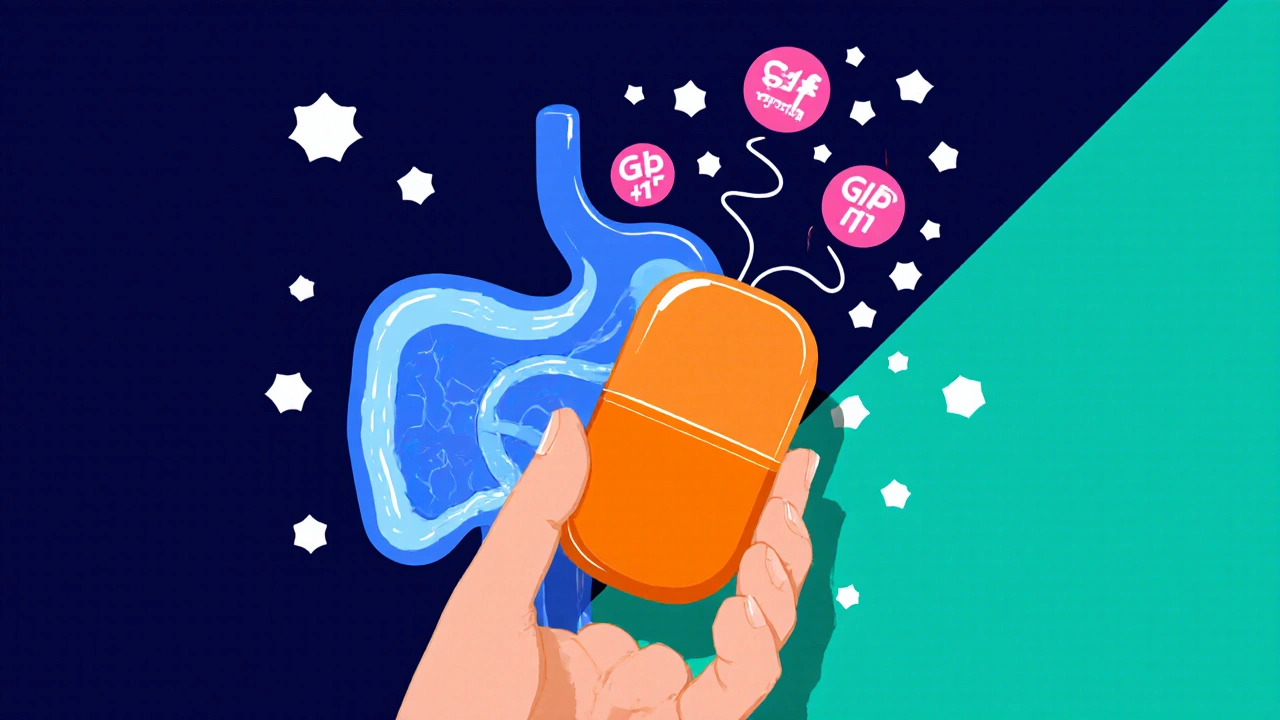Saxagliptin: Uses, Side Effects, and What It Means for Your Diabetes Management
When you hear the name Saxagliptin, a DPP‑4 inhibitor prescribed to lower blood sugar in adults with type 2 diabetes. Also known as Onglyza, it works by blocking the enzyme dipeptidyl peptidase‑4, which boosts natural incretin hormones and helps the pancreas release more insulin after meals. In simple terms, Saxagliptin lets your body use its own insulin more efficiently, which keeps glucose levels steadier throughout the day.
How the DPP‑4 Inhibitor Class Shapes Diabetes Care
The drug belongs to the broader DPP‑4 inhibitor class, a group of oral medications that prolong the activity of incretin hormones. By extending the life of GLP‑1 and GIP, DPP‑4 inhibitors reduce the amount of sugar the liver dumps into the bloodstream and improve post‑meal glucose control. This class of drugs is especially popular for patients who need a modest glucose‑lowering effect without the risk of hypoglycemia that comes with some older drugs. Saxagliptin, as a member of this class, provides a once‑daily pill that fits easily into most routines.
People rarely rely on a single medication to manage type 2 diabetes. The condition often calls for a combination approach, and that’s where Metformin, marketed as Glucophage, the first‑line oral therapy that reduces liver glucose production and improves insulin sensitivity comes in. Doctors frequently pair Saxagliptin with Metformin to get a stronger overall effect while keeping each drug at a lower dose. The synergy works because Metformin tackles the liver’s output, and Saxagliptin fine‑tunes how the pancreas responds to meals. Studies show that the combo can lower HbA1c by about 1.5 % on average, which is a meaningful drop for many patients.
Choosing Saxagliptin isn’t just about blood‑sugar numbers; you also have to consider kidney health and heart risk. The drug is cleared by the kidneys, so clinicians check renal function before prescribing and adjust the dose for moderate or severe impairment. In trials, Saxagliptin showed a neutral effect on cardiovascular outcomes, meaning it doesn’t raise heart‑attack risk and can be used safely alongside blood‑pressure medicines like Losartan when needed. Patients with existing heart disease often appreciate that the medication doesn’t cause weight gain, a common side effect of some older diabetes drugs.
Side effects are usually mild, with the most common being upper‑respiratory infections, headache, and occasional joint pain. Rarely, users report pancreatitis or severe allergic reactions, so any sudden abdominal pain or rash should prompt a doctor’s visit. Because the medication works on a hormonal pathway, it’s also important to stay hydrated and avoid alcohol excess, which can stress the liver and kidneys. Below you’ll find a hand‑picked collection of articles that dive deeper into related topics—ranging from how other diabetes drugs affect the gut, to practical tips for monitoring kidney function, to real‑world stories about managing side effects. Whether you’re just starting Saxagliptin or have been on it for years, these resources give you actionable insights to keep your diabetes plan on track.
Onglyza (Saxagliptin) vs. Other Type 2 Diabetes Drugs - 2025 Comparison Guide
A practical 2025 guide comparing Onglyza (saxagliptin) with other type 2 diabetes drugs, covering efficacy, safety, cost and when to choose each option.
Read more
